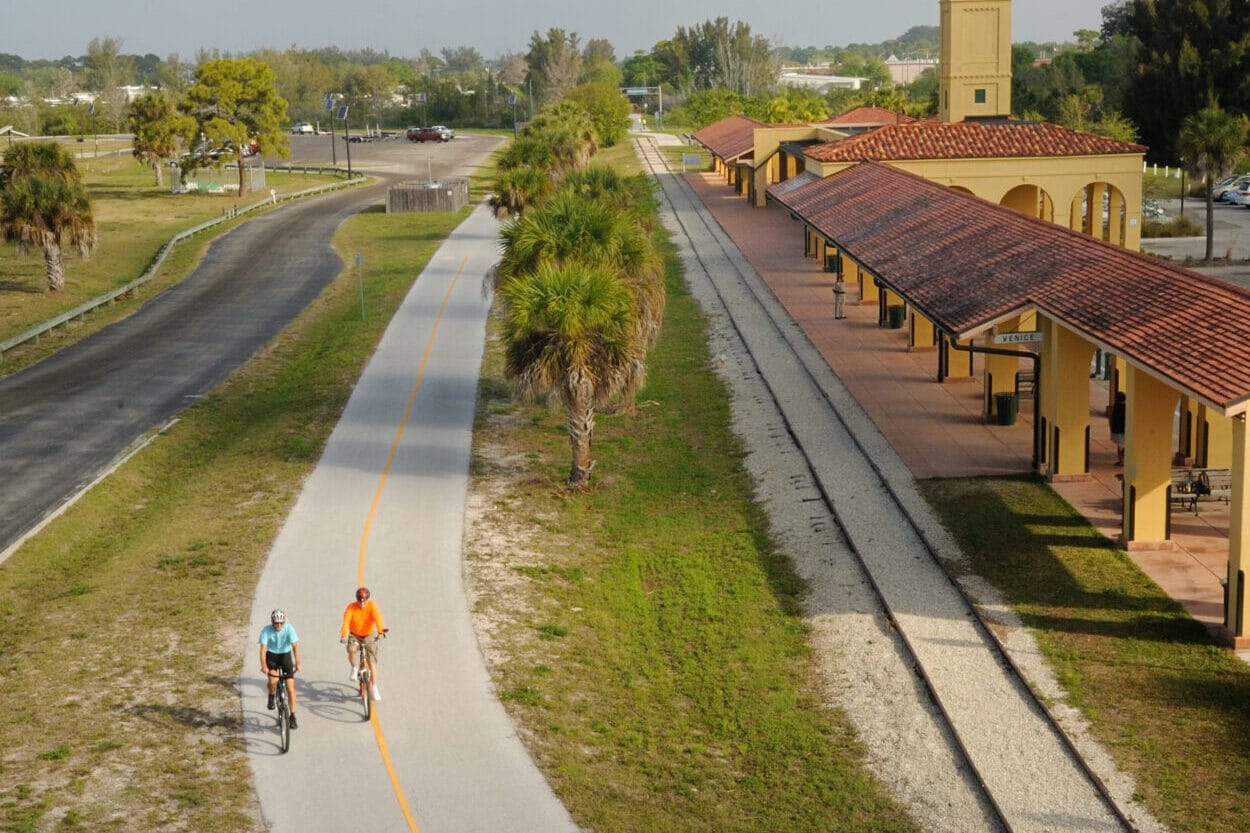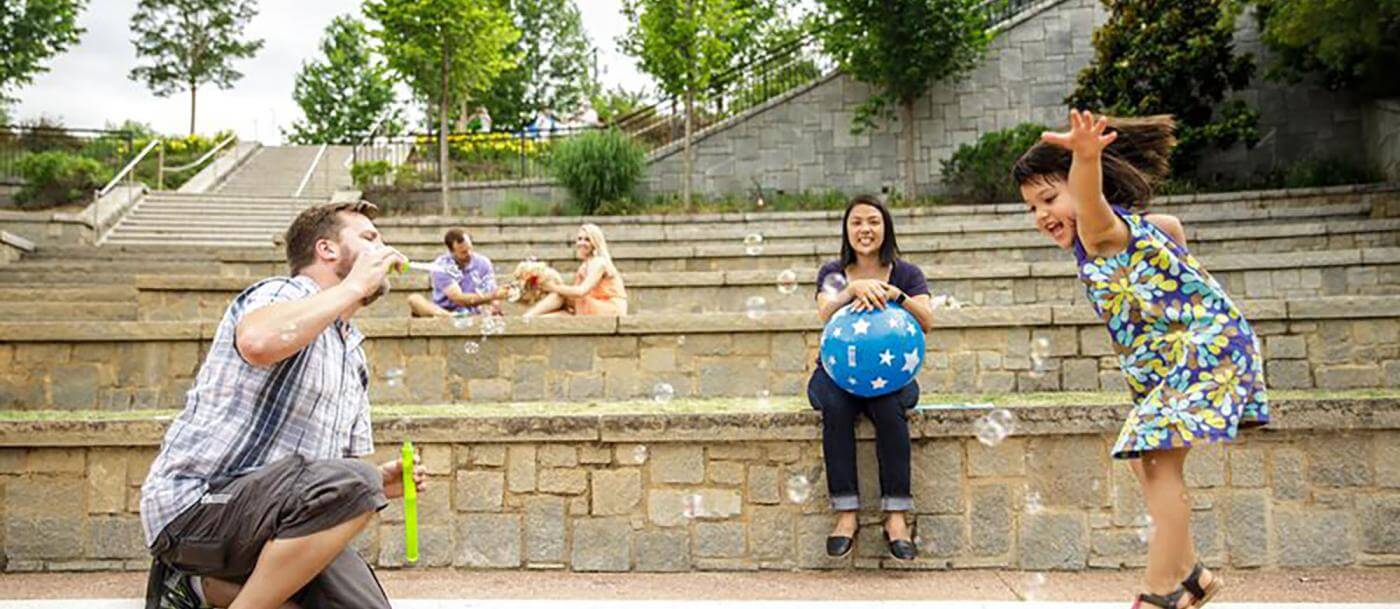
In a neighborhood with a divided past, parks are “common ground”
In a neighborhood with a divided past, parks are “common ground”
This fall, we’re celebrating all the ways parks unite us: with one another, with our neighborhoods, and with the world. In one Philadelphia neighborhood, the goal of creating a healthy, welcoming public park united neighbors who worked together to overcome decades of division.
In a bare-bones gymnasium in Grays Ferry one summer evening, twenty people are planning a party. This South Philadelphia neighborhood’s largest park is set to reopen with a big celebration in a few weeks, following a four-year renovation. But the people gathered on folding chairs arranged around center court say Lanier Playground’s reopening has actually been generations in the making.
“The sad thing is that when you Google ‘Grays Ferry’ the majority of what you read is not so much about the great things that have happened here through the years, but the racism that’s been in Grays Ferry for longer than me,” says resident Meeka Outlaw. “And I was born here.” She talks about what it was like to grow up in a neighborhood that, perhaps more than anywhere else in Philadelphia, has been plagued by racial divisions and violence.
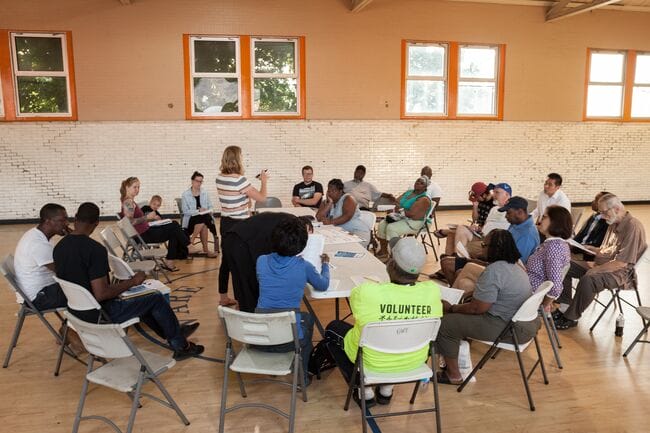 Before their local playground reopened in summer 2018, Grays Ferry neighbors gathered to plan a community celebration. It was the culmination of years of work by everyday residents coming together to create a shared future for their community.Photo credit: Elyse Leyenberger
Before their local playground reopened in summer 2018, Grays Ferry neighbors gathered to plan a community celebration. It was the culmination of years of work by everyday residents coming together to create a shared future for their community.Photo credit: Elyse Leyenberger
And those tensions played out nowhere more fiercely than at Lanier Playground. “The park was ground zero for racism in Grays Ferry,” Outlaw says. “You have Black people that live on one side and white people that live on the other side. If the Black people were in the park, the white people wouldn’t go in there. If the white people were in the park, the Black people wouldn’t go in there.” After decades of violence between neighbors in and around the park, the city intervened, locking the park’s gates in 2007. And that’s how it stayed: four acres of green space in the heart of a dense residential neighborhood, off-limits and unused.
Outlaw has worked alongside her neighbors to reopen the park since 2014. In the beginning, she remembers, the meetings to plan the park’s design mirrored the dynamics throughout the neighborhood. “It was just really separated, with black people on one side of the table, and white people on the other,” she says.
But over time, through thoughtful conversations about what the park could be, and why it mattered to everyone there, the hard feelings began to soften. “As it went on, then you started seeing the mixing of everybody. And everybody got to realize, okay, we all want the same thing,” says Outlaw, who lives with her nine-year-old son a few blocks from Lanier Playground. “I don’t want violence, just like you don’t want violence. I love this neighborhood, just like you love this neighborhood. You might have just moved here, and I might have lived here all my life, but Grays Ferry is your home, just like it’s my home.”
“This process has been much more than a forum for the development of the Lanier property,” agrees neighbor Jim Helman. “A racially mixed community meeting in Grays Ferry is quite rare, quite an accomplishment.”
The Trust for Public Land works alongside Philadelphia communities to dream, design, and build great public parks. In the past 8 years, we’ve helped rebuild 15 parks and schoolyards, with five more in development. Today, over 200,000 Philly residents live within a 10-minute walk of a Trust for Public Land project.
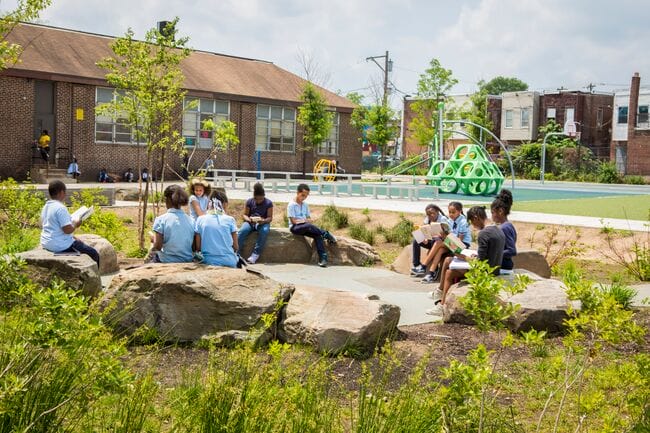 The new green schoolyard at Patterson Elementary School in south Philadelphia is one of 17 parks and playgrounds across the city recreated with help from The Trust for Public Land.Photo credit: Jenna Stamm
The new green schoolyard at Patterson Elementary School in south Philadelphia is one of 17 parks and playgrounds across the city recreated with help from The Trust for Public Land.Photo credit: Jenna Stamm
The renewed Lanier Playground, which opened to the public in August 2018, represents the culmination of years of work from a coalition of longtime residents who are deeply committed to their neighborhood growing beyond its divided past. “We’re presenting this park to the community like it’s a new beginning, like it’s something they’ve never seen before,” says Tyrique Glasgow. He moved with his family to Grays Ferry when he was 11, and he recalls walking home past Lanier Playground, dodging rocks and bottles hurled by neighbors. Today, Glasgow heads Young Chances Foundation, a neighborhood youth development organization—a calling which grew out of his own history of gun violence and serving time behind bars when he was younger.
Glasgow says historically there haven’t been many places in Grays Ferry where anyone is welcome at any time. He’s looking forward to having a place to host sports leagues and block parties for Grays Ferry kids, but he also hopes the renewed Lanier Playground will allow everyone—black or white, young or old, lifelong neighborhood resident or new arrival—to feel at home, and part of a community. “This park is the place where families can walk after a long day of work. If parents can’t afford day care, they can take their kids to a place where it’s safe to play.”
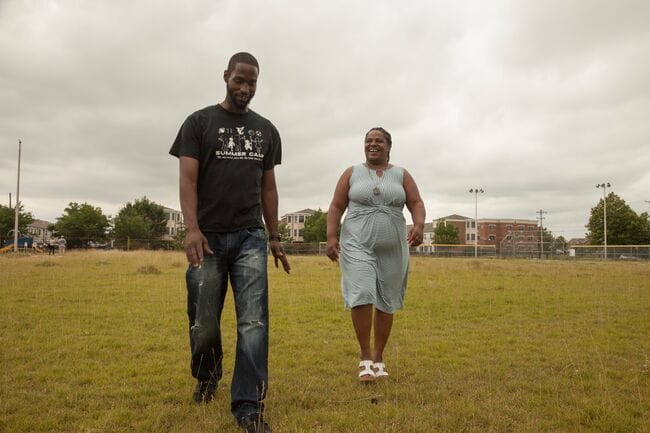 Tyrique Glasgow and Meeka Outlaw were part of the neighborhood coalition to rebuild Lanier Playground. “You might have just moved here, and I might have lived here all my life, but Grays Ferry is your home, just like it’s my home,” Outlaw said.Photo credit: Elyse Leyenberger
Tyrique Glasgow and Meeka Outlaw were part of the neighborhood coalition to rebuild Lanier Playground. “You might have just moved here, and I might have lived here all my life, but Grays Ferry is your home, just like it’s my home,” Outlaw said.Photo credit: Elyse Leyenberger
“This one park won’t be the thing that solves racism in Grays Ferry,” Outlaw acknowledges. “There’s a lot of hurt and a lot of pain, and for some people their memories of Lanier Playground are the center of that.” But she believes the new space—and the diverse group of neighbors who’ve worked together to make it happen—are “a step in the right direction.”
“It’s disheartening to see the divisions that still exist in Grays Ferry,” Outlaw says. “But what would be even more disheartening is if you allow that to scare you away. If once you see division, you say, ‘Okay, I see this ain’t going to change, let me leave it alone.’ But the truth is, we all want to see the best for the neighborhood and we all want to stay in the neighborhood. And I think when you hold on to that and realize that—and I know it’s going sound cliché—but we have more in common than we have not in common. Once you find that common ground, that’s where you begin to work together.”
Read more about how people are uniting for parks across Philadelphia in Land&People magazine.
Trust for Public Land supporters are powering transformations like these all across the country. Take the #ParksUniteUs challenge and help us raise $100,000 to create more parks, for more people, in more places.
One-third of Americans, including 28 million children, lack safe, easy access to a park within a 10-minute walk of home. Urge your senators to allocate funding to create parks and enhance outdoor recreational opportunities by championing the Outdoors for All Act today!


Donate to become a member, and you’ll receive a subscription to Land&People magazine, our biannual publication featuring exclusive, inspiring stories about our work connecting everyone to the outdoors.
See how our supporters are helping us connect people to the outdoors across the country.








